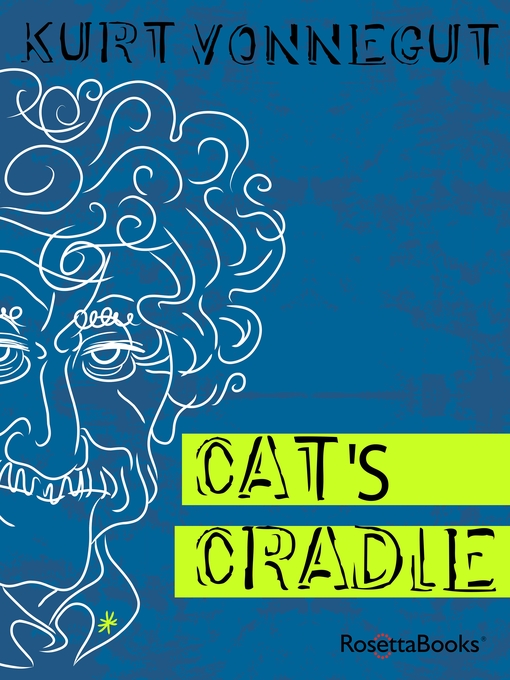Cat's Cradle (1963) is Vonnegut's most ambitious novel, which put into the language terms like "wampeter", "kerass" and "granfalloon" as well as a structured religion, Boskonism and was submitted in partial fulfillment of requirements for a Master's Degree in anthropology, and in its sprawling compass and almost uncontrolled (and uncontrollable) invention, may be Vonnegut's best novel.
Written contemporaneously with the Cuban missile crisis and countenancing a version of a world in the grasp of magnified human stupidity, the novel is centered on Felix Hoenikker, a chemical scientist reminiscent of Robert Oppenheimer... except that Oppenheimer was destroyed by his conscience and Hoenikker, delighting in the disastrous chemicals he has invented, has no conscience at all. Hoenikker's "Ice 9" has the potential to convert all liquid to inert ice and thus destroy human existence; he is exiled to a remote island where Boskonism has enlisted all of its inhabitants and where religion and technology collaborate, with the help of a large cast of characters, to destroy civilization.
Vonnegut's compassion and despair are expressed here through his grotesque elaboration of character and situation and also through his created religion which like Flannery O'Connor's "Church Without Christ" (in Wise Blood) acts to serve its adherents by removing them from individual responsibility. Vonnegut had always been taken seriously by science fiction readers and critics (a reception which indeed made him uncomfortable) but it was with Cat's Cradle that he began to be found and appreciated by a more general audience. His own ambivalence toward science, science fiction, religion and religious comfort comes through in every scene of this novel.
